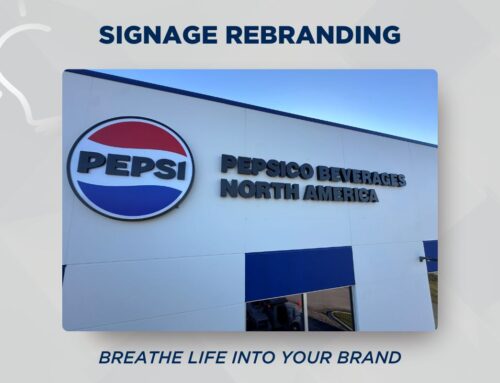In an era where environmental consciousness is paramount, eco-friendly sign materials are vital in promoting sustainability. Eco-friendly signage materials convey important messages and contribute to reducing our carbon footprint and conserving natural resources. Let’s explore the various options available for creating environmentally responsible signage.
The Significance of the Eco-Friendly Sign
Signage is everywhere, from businesses and public spaces to transportation hubs and parks. As such, the materials used in signage production considerably impact our environment. Opting for eco-friendly materials is a responsible choice for several reasons:
Reduced Environmental Impact:
Eco-friendly sign materials are typically sourced and produced with minimal environmental harm. They reduce the depletion of natural resources, lower carbon emissions, and minimize waste generation.
Health and Safety:
Many conventional signage materials contain harmful chemicals and toxins that can pose health risks during production, installation, and disposal. Eco-friendly materials prioritize safety and health for all involved.
Longevity and Durability:
Sustainable signage materials are often built to last, reducing the need for frequent replacements. This longevity minimizes resource consumption and waste over time.
Eco-Friendly Sign Material Options
Recycled Materials:
Using recycled materials, such as recycled aluminum, plastic, or wood, is an excellent way to reduce the demand for virgin resources. These materials are often just as durable and attractive as their non-recycled counterparts.
Bamboo:
Bamboo is a fast-growing, renewable resource that makes for an eco-friendly sign material. It’s strong, lightweight, and biodegradable, making it an excellent choice for sustainable signage.
FSC-Certified Wood:
Signage made from wood sourced from forests certified by the Forest Stewardship Council (FSC) ensures responsible and sustainable logging practices.
Biodegradable Plastics:
Some plastics, like those made from biodegradable or plant-based materials, offer an eco-friendly alternative. They break down naturally, reducing plastic pollution.
Stone and Concrete:
Natural stone and concrete are durable materials that can be used for outdoor signage. They have a long lifespan and require minimal maintenance.
Digital Signage:
Opting for digital signage reduces the need for physical materials altogether. This can be a sustainable choice, particularly for businesses with frequently changing messages.
Designing An Eco-Friendly Sign
Selecting eco-friendly materials is only one aspect of sustainable signage. Design choices also matter:
Minimalist Design:
A clean and simple design looks modern and reduces the material needed for signage.
Energy-Efficient Lighting:
If illumination is required, use energy-efficient LED or solar-powered lighting to minimize energy consumption.
Proper Sizing:
Make sure the size of the signage is appropriate to convey the message effectively without being excessive.
Recyclable Inks:
Use eco-friendly, non-toxic, and recyclable inks for any printed elements.
Eco-friendly sign materials are a critical component of sustainable communication. By choosing responsibly sourced and environmentally conscious materials, businesses, organizations, and individuals can play a part in conserving resources, reducing waste, and promoting a greener and more sustainable future. Making these choices for signage benefits the environment and sends a powerful message about our commitment to a sustainable world.
Are you in Southeastern Wisconsin? Looking for a sign? Check out Innovative Signs’ portfolio, or start estimating your next sign project today.









